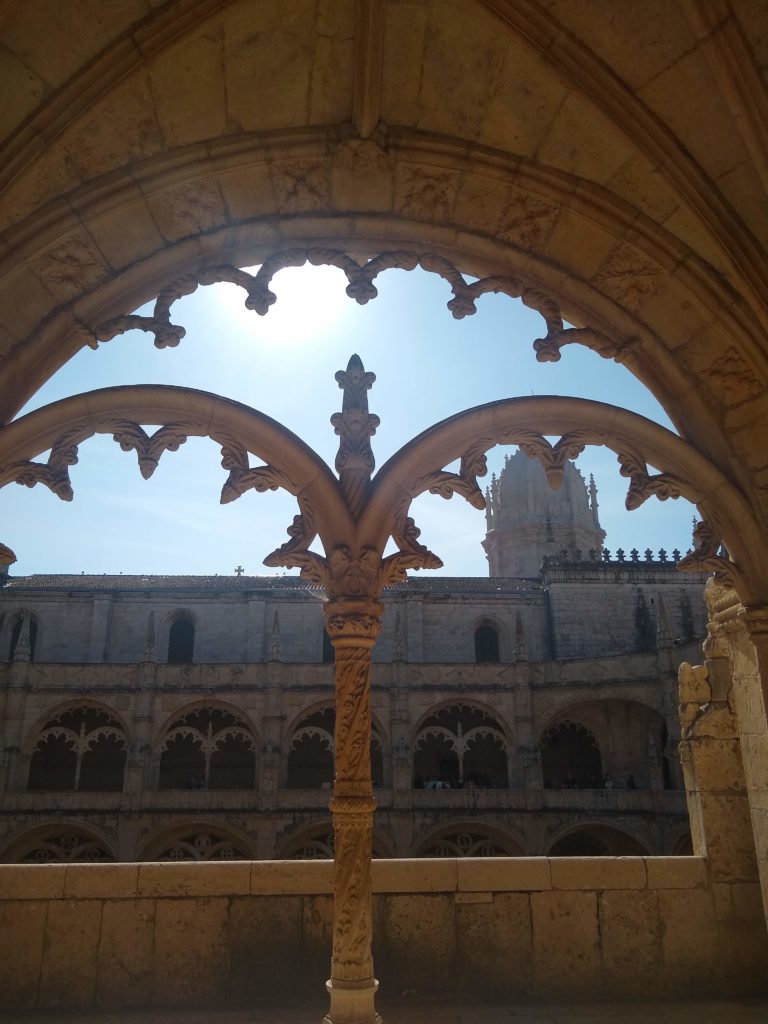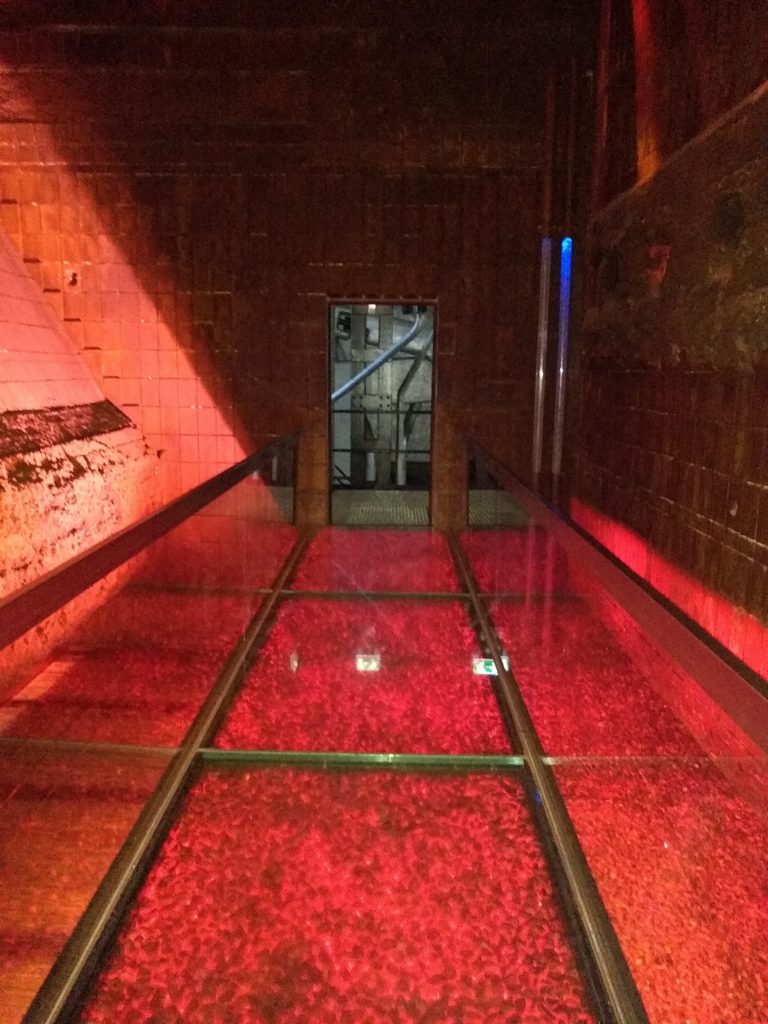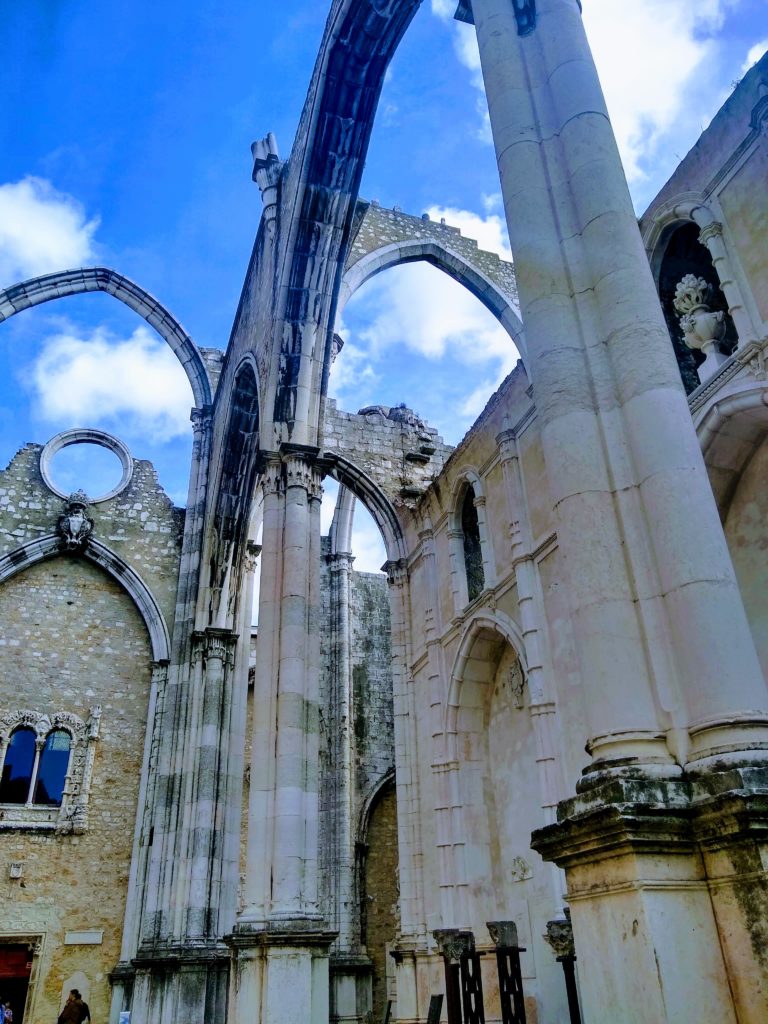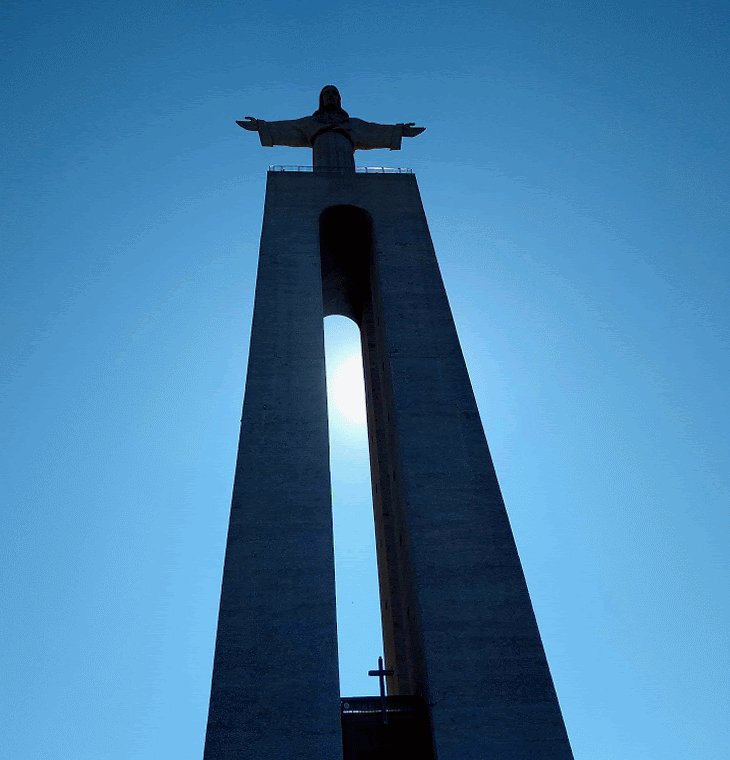There are many stunning things to see in Portugal. Many of them are museums and historical sites. Unfortunately, despite the Portuguese adoration of children very few of them have kid friendly exhibits. A stark contrast to our experience in Edinburgh and, especially, Liverpool.
Take the fascinating Museu do Oriente . One of its major exhibits is Chinese opera. Chinese opera! An art full of masks, elaborate costumes, even puppetry! Yet nothing interactive, nothing for kids. Museu Calouste Gulbenkianhas great art and for kids? Well…they can explore the garden outside. Belem Tower? Barely anything for adults. Christ the King has a bit of space for kids to run around while parents enjoy the view. If you’ve got a little sailor there is the Maritime Museum (often also referred to as the “Navy Museum”) Museu de Marinha. LB enjoyed seeing the boat garage but, again, nothing specific for kids unless you count the anchors they are free to climb on outside.
Next to the Museu de Marinha is the Jeronimos Monastery, an absolute must see. The intricate workmanship is simply mind boggling. A symbol of the so-called Age of Discovery the Jeronimos Monastery was begun by King Manuel I in 1502 to venerate Vasco Da Gama and his voyage to India. The Monastery took a century to complete and the reasons why are obvious. Done in a European Gothic style known as “Manueline” every column is intricately hand carved with coils of rope, creatures of the sea, shells, and other marine motifs. Nothing for kids.

At least not inside. Both museums face out onto a large, green park offering views of the river. Besides the acres of grass, the massive fountain, and an incongruously placed Thai pavilion sent by the Thai people in 2011 to acknowledge the 500 years since the Portuguese made contact, there is a playground. There is also a cafeteria connected to the museums. The food is surprisingly good, though the atmosphere is equally surprisingly lacking. It also takes forever to get through the line.

The lone exception we encountered was the MAAT – Museu de Arte, Arquitetura e Tecnologia. The MAAT was very different from any museum I have been to previously in a way that is hard to describe. And I have been to a lot of museums. The stated ambition is to “…host national and international exhibitions with contributions by contemporary artists, architects and thinkers.” And to create “(a) space for debate, critical thinking and international dialogue…” It is a very ambitious project. The entire museum is very interactive with a full area focused on kids. Strangely enough, this is not highlighted anywhere on the site.
Personally, as much as I enjoy museums, I am an absolute sucker for ruins. My favorite part of Holyrood Palace in Edinburgh was the Abbey. Or what was left of it. So, you know I was down for Largo do Carmo or, more specifically, the ruins of the never fully restored after the massive earthquake of 1755 Carmo Convent.
The earthquake was one of the deadliest quakes in history. The number of dead remains unknown with estimates ranging from ten to one hundred thousand. Most of the city was left in complete ruin. The earthquake destroyed the Largo do Carmo including its library of 5000 books, maps, journals of explorers, and countless works of art. The tragedy of the destruction of one of the oldest continually settled cities of Europe, also a major capitol and seaport, had great impact all over Europe.

The Convent is stunning. The largest church in Lisbon when the quake hit the roof was never replaced leaving the nave open to the sky. In more recent history it was the site of one of the most significant incidents in the Carnation Revolution when prime minister Marcello Caetano sought the refuge of the Republican National Guard headquartered in the building. In the former main alter is a small museum. The film shown there is a must watch if only for the way in which it is done. As amazing as the site was it is also not for young kids.
There were four countries of Europe that dominated the great Colonizer Wave of the 15th through the early 20th centuries. England, though relatively late to the game, is the first to come to the mind of most. Second is the Spanish. I mean, Latin America, anyone? The third is France. There was the Louisiana Purchase, Quebec, French Polynesia, and several countries in Africa where French is still a thing. If one thinks of them at all, the Portuguese tend to come in a distant 4th with most people’s knowledge of Portuguese colonization beginning and ending with Brazil.
In fact, Portugal’s sea faring past, extends from Africa’s Cape of Good Hope to India and into China Before any other European countries. Portuguese influenced architecture can be found from Mozambique to Tanzania, from India to Macau. The Carmo Convent museum, with its almost random collection of archeological items, including shrunken heads and South American mummies is just one of many examples of Portugal’s problematic pride in that colonial past.
European colonization is a fraught subject. At the start of a story on the subject of Portugal’s colonizing past David Greene of NPR states, “Portugal has a rich history of exploring once uncharted lands, like Brazil and Africa.” Without acknowledgement that the lands were not only charted but inhabited by the time Europeans arrived. By 1571 Portuguese outposts extended along the coasts of Africa, the Middle East, India and South Asia. The modern result of this is that Lisbon has one of the most diverse populations in Europe with Creole as the second most spoken language in the city.
In museum after museum I saw a lack of acknowledgement that many of triumphs of colonization were brought about by enslaving Africans and native peoples and using this forced labor to strip the territories of natural resources. Most museums failed to recognize the widespread enslavement and sale of human beings as a thing at all with people being reduced to no more than goods on the informative plaques of exhibits. Like a lot of colonizer countries, including my own, Portugal’s sense of self seeks to deny a violent history that includes pillaging of resources, enslavement of populations, and genocide.
Other Sources
https://www.arcgis.com/apps/MapJournal/index.html?appid=ad33e54267084b3d8bfc862224d23fa6
https://www.golisbon.com/sight-seeing/carmo-church.html
